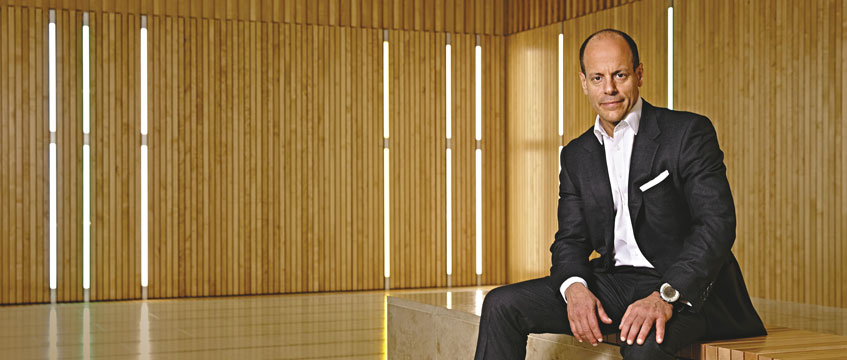The US investment companies buying ownership of European firms for their property assets and their people are now finding the going tougher. Andrea Carpenter finds them looking to ride out the downturn or develop exit strategies
In May, PRICOAProperty Private Equity added another operating company to its stable of specialist property-related businesses when it signed a joint venture with US firm Sunrise Assisted Living. The partnership will develop up to 50 retirement homes in the UK and Germany over the next five years.
The deal is a classic example of the innovative way USinvestors are putting their money into European property markets. PPPEis backing a proven business model and management team but securing its investment against real estate.
However, the US-backedoperating company model suffered a blow earlier this year when pioneer Security Capital European Realty was taken over by GECapital, threatening its strategy in Europe. From 1998 to 2001, Security Capital had blazed a trail for USinvestors, snapping up stakes in Akeler and City &West End. Its plans began to unravel as key personnel running its businesses walked and market conditions in Europe became much more challenging.
As one operator puts it: “US investors like riding a wave and when it’s over, they like to run for cover and pretend it never happened. The property industry in Europe is different. It is very cyclical; part of the strategy here has to be getting through the low bits.”
Those still dedicated to the operating company strategy – such as Colony Capital, Morgan Stanley, PPPE and Soros Real Estate Partners – would certainly argue that the wave has not broken, but in a tougher market the stress is beginning to show. “Nobody has been burnt so far, but they have all been active in a rising market – what would have happened if the market was not rising?”asks Tony Edgley, international director at Jones Lang LaSalle.
The leaner times force questions about where the value in operating company investments now lies.
“Buying pieces of existing businesses and backing both the management and assets brings with it a series of risks,” says Edgley. “It is not just about real estate risk; it is also about underwriting human risk. For instance, there is the question of whether you have aligned the requirements of shareholders with the ambitions of the management team you are backing. It is a much more complex dynamic than you’d first suspect.”
On track with investments
Jonathan Short, chief executive of PPPE, says it is still on track with its investments. “Maybe we are unusual, but our investments are all on target or above,” he says. Its holdings include controlling stakes in UK business park developer Arlington, and office companies Bauwert and Banimmo.
“We spend a huge amount of time getting comfortable with the management team,” says Short. The company decides on a sector in which it is interested and then seeks a suitable operator, making the strategy more focused, he claims. “Our commitments are not general – they are more specialised.”
As the market flattens out, the balance of power in the investor/management relationship could shift. For example, management may find it harder to hit its targets and may be less motivated. Short says this can be controlled by the details of the deal, and in bad times there can be “more control depending on how you deploy the capital in certain markets. It might be better to drip feed the capital.”
Sebastien Bazin, European director at Colony Capital, says the management’s motivation is closely tied to the investor’s. “The management are aligned with us and with Colony’s exit strategy.”
Both Bazin and Short’s strategies, however, have built-in contingency plans for coping with unseen obstacles from management. “When we go into a business we take into account that we need to fetch a far greater than normal return, so if the management takes us hostage we can still come out with a 25% return,” says Bazin. Short adds: “The worst-case scenario is to liquidate the business. The value in the management is the icing on the cake.”
Richard Mully, managing partner, Europe, for Soros Real Estate Partners, also stresses the importance of ownership of the assets. “We invest in a firm because we are a better buyer of assets,” says Mully. “Investors are nervous when the investment in the business rests on realising the enterprise value.”
Colony’s approach has seen it make some unusual investments with a real estate angle. The most traditional investment is its 62% stake in French listed company Lucia. The capital has been used to buy direct assets, including the last major building project at La Defense, totalling 170,000m2, in a joint venture with Canadian investor SITQ.
More unusual is its investment in a vineyard, which it sees as a land-backed investment, and its investment in a railway car maintenance company with sites in Austria, Belgium, Holland and Italy. The firm, however, has four major workshops, which include two on the edges of Milan and Rome, which it intends to develop as offices. “We will finish the job extracting the real estate value and then transfer the business to another operator,” says Bazin.
Others base their investments on projected rental growth, a route that Tim Morris, chief investment officer of Morgan Stanley’s Real Estate Special Situations Fund, says is more precarious. “If investors buy to gain a cash flow and not for growth, then they have a high cash flow and assets which are reversionary; with leverage, they can generate the types of return needed to provide the management with an incentive. If they go for rental growth it is harder to get the management side of things right.”
David Brush, managing director and head of DB Real Estate Private Equity, says his business backs firms for growth only when they are in niche sectors, such as Shurgard Storage Centers, which was bringing self-storage to an undeveloped market in Europe. DB Real Estate has also backed the management of companies in central Europe, where there was – at the time – very limited operating expertise.
Brush says backing management is still a good route but that prices have shifted. “Good management adds quality; today it is a question of how much to pay for that. A few years ago when the market was stronger and there was more room, you could afford to pay a premium for good management.”
Morgan Stanley backs operating companies through Morgan Stanley Real Estate IV, but it is also pursuing an alternative strategy in Europe with its Special Situations fund. The fund, whose first deal was a €35m investment in Spanish firm Fadesa, takes only minority stakes in companies.
“A non-controlling investment vehicle is more accessible to the best operators,” says Morgan Stanley’s Morris. The €300m fund seeks returns of 16-17%, generated by the “outperformance of real estate through operating leverage and finance leverage”.
The firm takes only a small stake, but the lack of control is mitigated, according to Morris, by the way the deal is underwritten. “We look for a minimum stake but underwrite the real estate. We spend a lot more time underwriting the management, as we are not in control.” Opportunity funds can take over their controlling investments in companies if problems arise.
Morris says that this strategy has wider benefits for the companies being invested in, including attracting more interest from investors following the fund’s “seal of approval”. “It is a confirmation of the asset class, and the company’s management team, and its business plan.” The companies can also access Morgan Stanley’s expertise to “bounce ideas and get good feedback”.
The fund’s investments have so far been in private companies, but this could change. “Public companies are trading at a big discount to net asset value so it is hard for the management team to create equity. If they trade closer to NAV, that might change.”
Search for an exit strategy
Investors also need an exit strategy. Flotation was thought to be Security Capital’s exit route, but the decline of the listed sector has put paid to this. Bazin says Colony Capital will never look to the public markets: “Flotation is never an option, as it is beyond anyone’s control.”
Instead, Bazin sees Colony as a bridge, which will see the acquired company transferred to more suitable owners once value has been extracted, as with the railway car maintenance company. For example, it will assist the management in a buyout or help them to find alternative investors.
Edgley predicts that there will be a change in investors in many cases but this will not necessarily give the management team greater freedom. “At the end of the life cycle, an MBO can occur only if management has adequate resources or is backed by investors. It is more likely to be a management sell-on under a new set of ground rules, to take account of the changed circumstances.”
This article is an edited version of one that appeared in EuroProperty, June 2002.
|
Selection of the US backers and their operating companies |
||||
|
US investors are still keen to buy into European property markets through stakes in local companies |
||||
|
Investor |
Operating company |
Investment |
Type of company |
Year |
|
Colony |
Capital Lucia |
62% stake |
French property company |
1999 |
|
Morgan Stanley Special Situations Fund* |
Fadesa |
€35m |
Spanish property company |
2002 |
|
Orion European Real Estate Fund |
Locafinancere |
Details unavailable |
French property company |
2001 |
|
PPPE |
Sunrise |
$120m (with Sunrise) |
Assisted living operator |
2002 |
|
PPPE |
DeWAG |
$40m |
German residential developer |
2002 |
|
PPPE |
Arlington |
Up to £310m |
Business parks developer |
2001 |
|
Soros Real Estate Investors |
Hellenic Land |
Details unavailable |
Greek property company |
2002 |
|
Soros Real Estate Investors |
Dolce |
33% stake |
Hotel and conference-centre operator |
2001 |
|
Source: EuroProperty * minority stake |
||||










